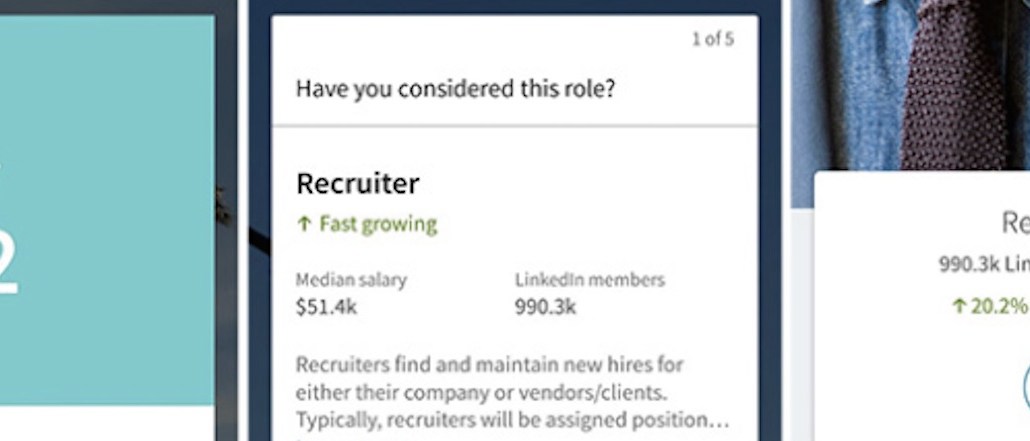
It’s almost graduation season so the daunting task of finding a job looms. LinkedIn hopes to help.

Today, the career-oriented social network is launching a standalone app, LinkedIn Students, that helps them land a job. The purpose to help soothe their job-hunting anxieties and surface suggested jobs based on its algorithm of the users’ preferences and college alumni connections.
LinkedIn Students, with its swipeable format that mimicks Tinder and Hinge, is designed with millennials in mind. The cards serve up suggested jobs, networking opportunities and news from companies users are interested in. And, just like a dating profile, the app lets users build a profile based on a few questions.
Unlike LinkedIn’s flagship app, the stripped-down LinkedIn Students app lacks messaging, groups and its news hub Pulse. Instead of Pulse, the app has content with sponsored posts from J.P. Morgan focusing on careers. Companies can’t pay LinkedIn to target people with specific jobs.
Of course, LinkedIn Students is a way for young people to become lifelong — and hopefully paying — members. “This is a soft introduction to students, who may not know the value of networking, and introduce LinkedIn’s value proposition,” Ada Yu, a LinkedIn project manager, told VentureBeat.
More in Media

Media Briefing: ‘Cloudflare is locking the door’: Publishers celebrate victory against AI bot crawlers
After years of miserably watching their content get ransacked for free by millions of unidentified AI bot crawlers, publishers were finally thrown a viable lifeline.

How Vogue could navigate potential industry headwinds as Anna Wintour — who agency execs say made ad dollars flow — brings on new edit lead
Anna Wintour’s successor at Vogue will have to overcome the myriad of challenges facing fashion media and the digital publishing ecosystem.

Here are the biggest misconceptions about AI content scraping
An increase in bots scraping content from publishers’ sites represents a huge threat to their businesses. But scraping for AI training and scraping for real-time outputs present different challenges and opportunities.





